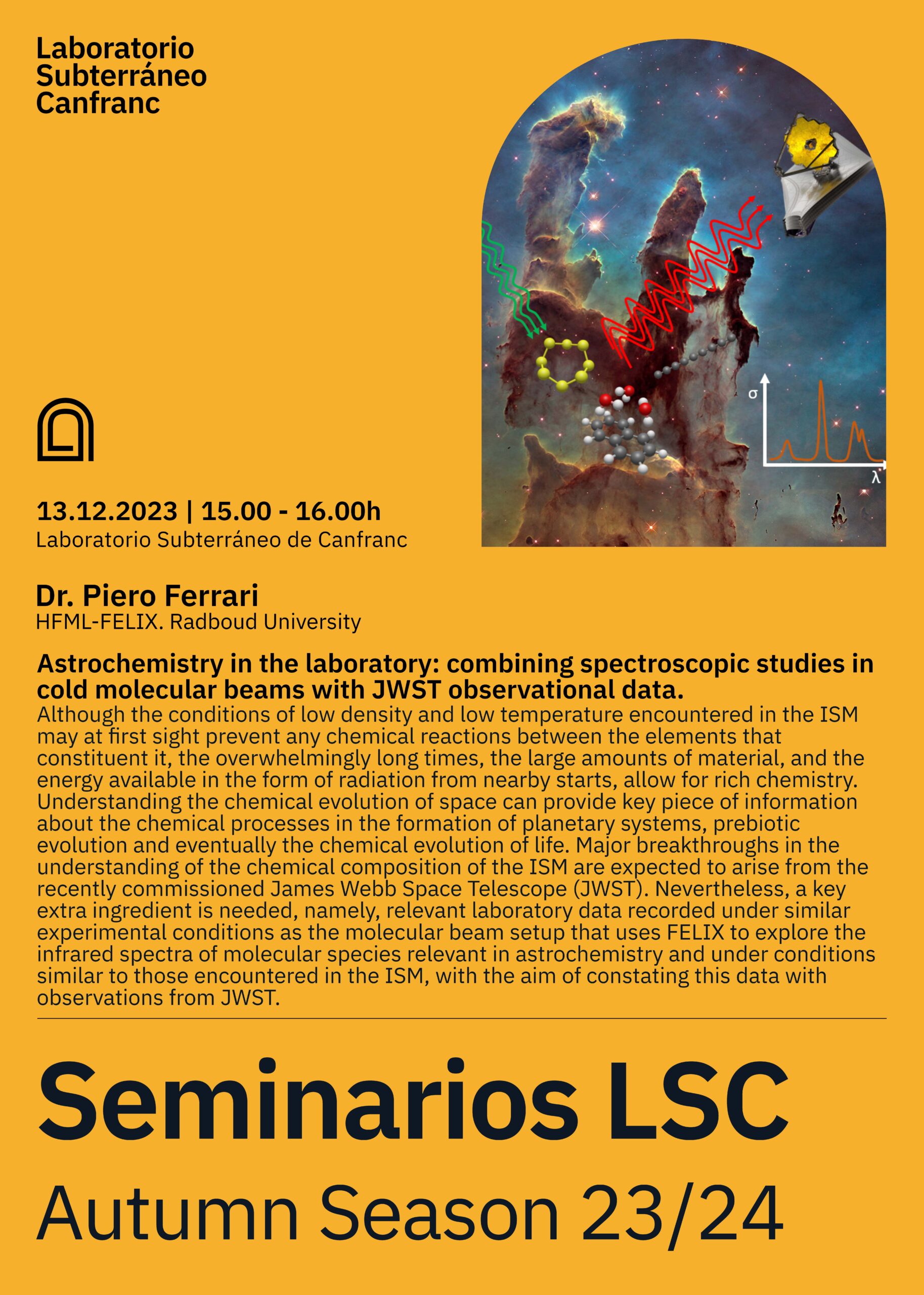Dr. Piero Ferrari – HFML-FELIX. Radboud University
13 de diciembre de 2023
Astrochemistry in the laboratory: combining spectroscopic studies in cold molecular beams with JWST observational data.
Although the conditions of low density and low temperature encountered in the ISM may at first sight prevent any chemical reactions between the elements that constituent it, the overwhelmingly long times, the large amounts of material, and the energy available in the form of radiation from nearby starts, allow for rich chemistry. Understanding the chemical evolution of space can provide key piece of information about the chemical processes in the formation of planetary systems, prebiotic evolution and eventually the chemical evolution of life. Major breakthroughs in the understanding of the chemical composition of the ISM are expected to arise from the recently commissioned James Webb Space Telescope (JWST). Nevertheless, a key extra ingredient is needed, namely, relevant laboratory data recorded under similar experimental conditions as the molecular beam setup that uses FELIX to explore the infrared spectra of molecular species relevant in astrochemistry and under conditions similar to those encountered in the ISM, with the aim of constating this data with observations from JWST.


